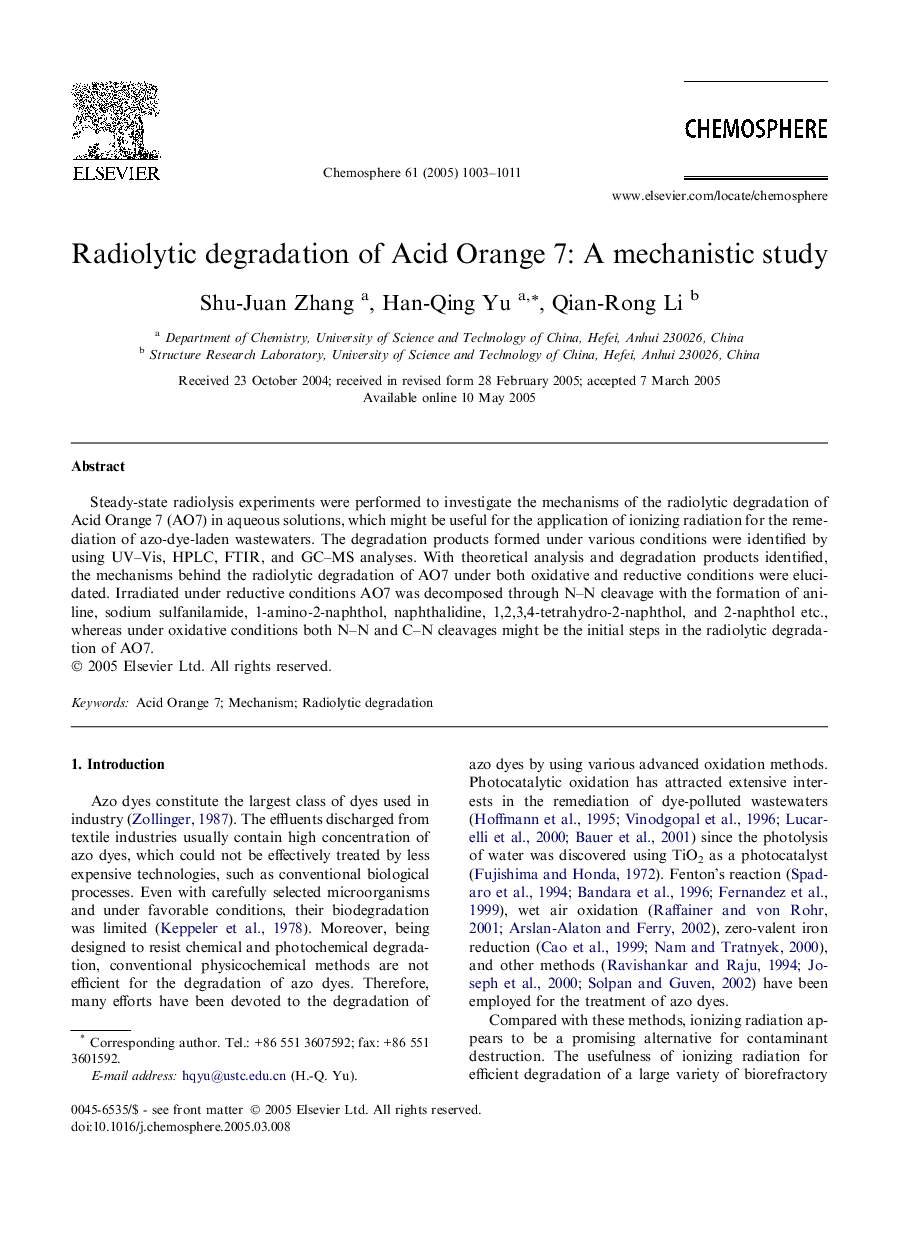| Article ID | Journal | Published Year | Pages | File Type |
|---|---|---|---|---|
| 9451550 | Chemosphere | 2005 | 9 Pages |
Abstract
Steady-state radiolysis experiments were performed to investigate the mechanisms of the radiolytic degradation of Acid Orange 7 (AO7) in aqueous solutions, which might be useful for the application of ionizing radiation for the remediation of azo-dye-laden wastewaters. The degradation products formed under various conditions were identified by using UV-Vis, HPLC, FTIR, and GC-MS analyses. With theoretical analysis and degradation products identified, the mechanisms behind the radiolytic degradation of AO7 under both oxidative and reductive conditions were elucidated. Irradiated under reductive conditions AO7 was decomposed through N-N cleavage with the formation of aniline, sodium sulfanilamide, 1-amino-2-naphthol, naphthalidine, 1,2,3,4-tetrahydro-2-naphthol, and 2-naphthol etc., whereas under oxidative conditions both N-N and C-N cleavages might be the initial steps in the radiolytic degradation of AO7.
Related Topics
Life Sciences
Environmental Science
Environmental Chemistry
Authors
Shu-Juan Zhang, Han-Qing Yu, Qian-Rong Li,
